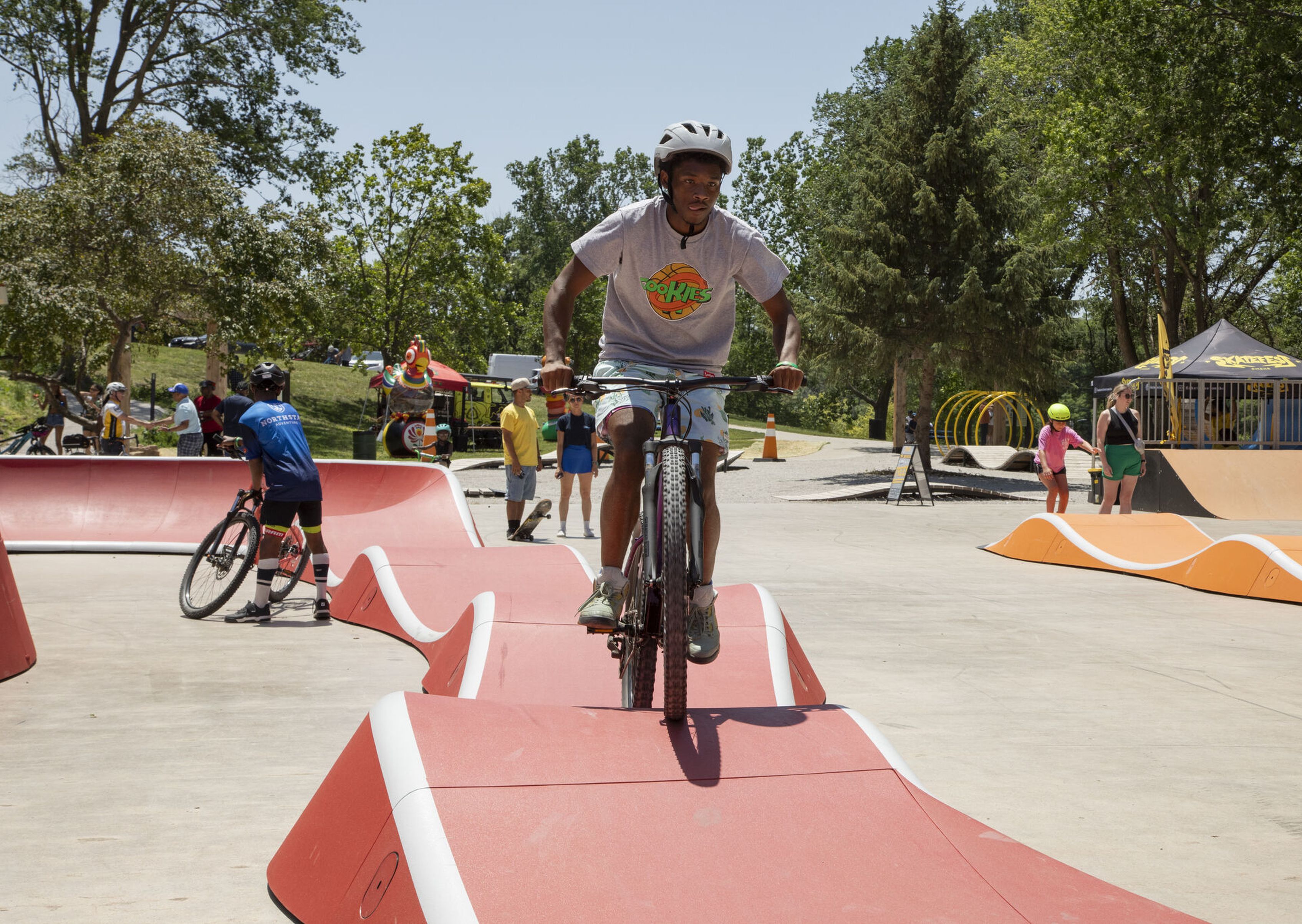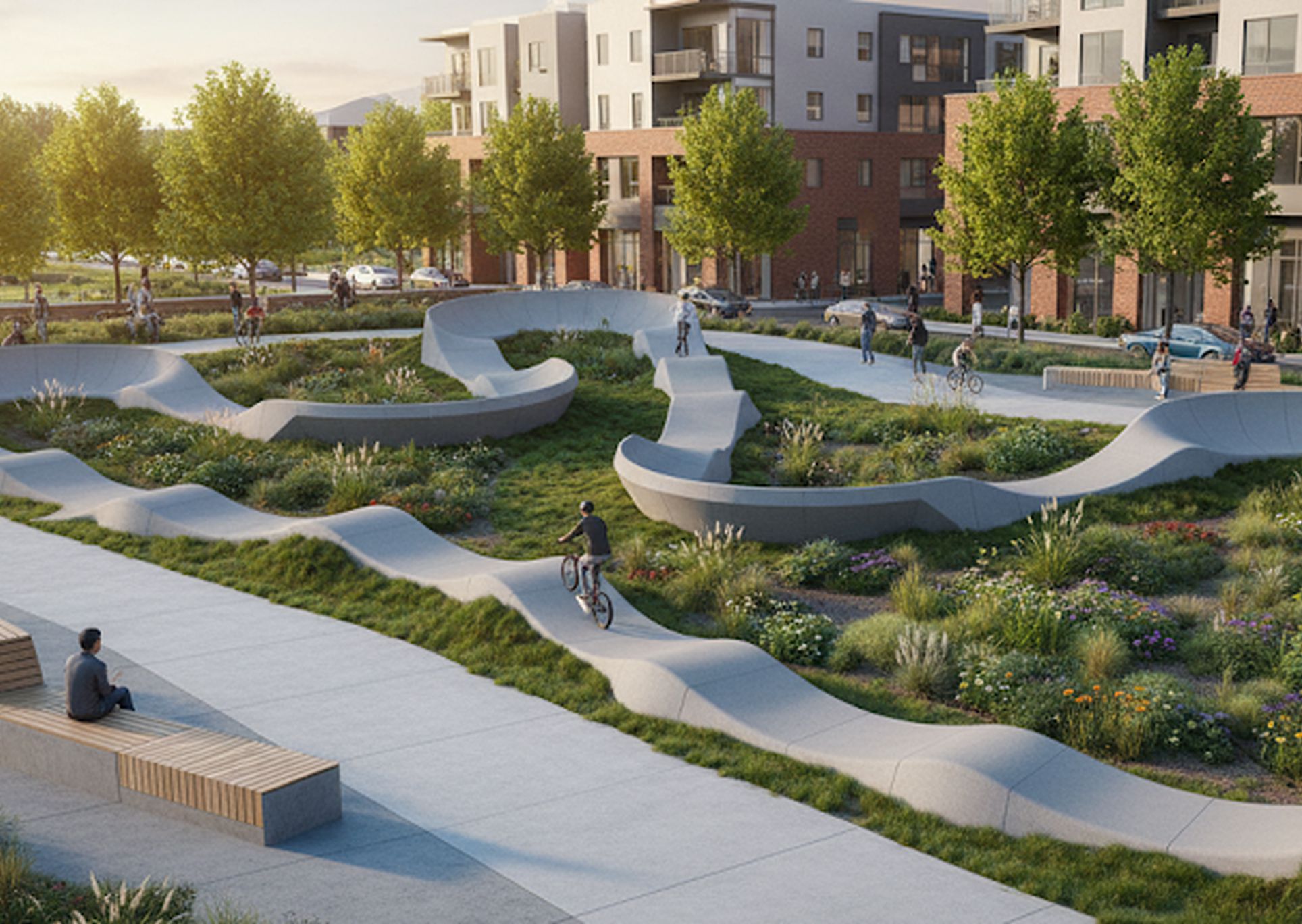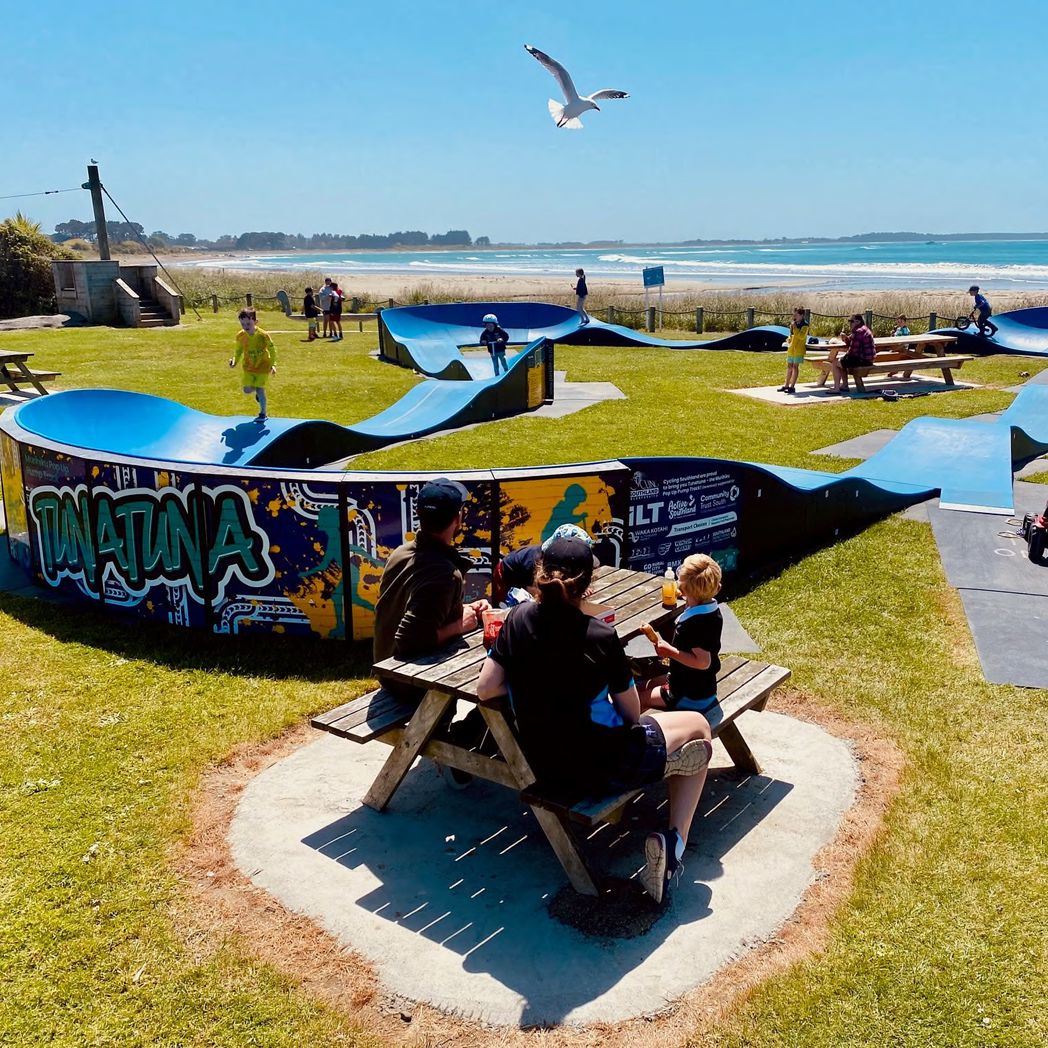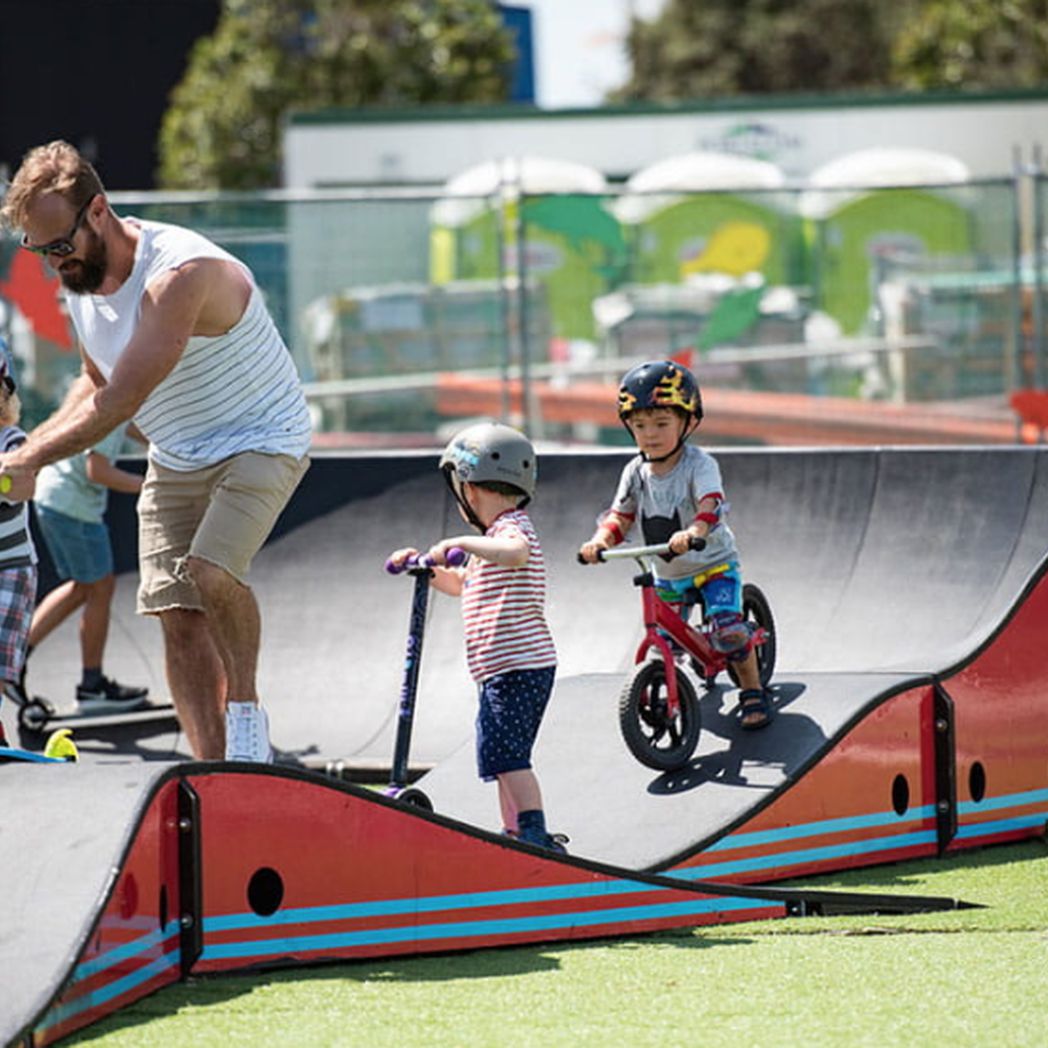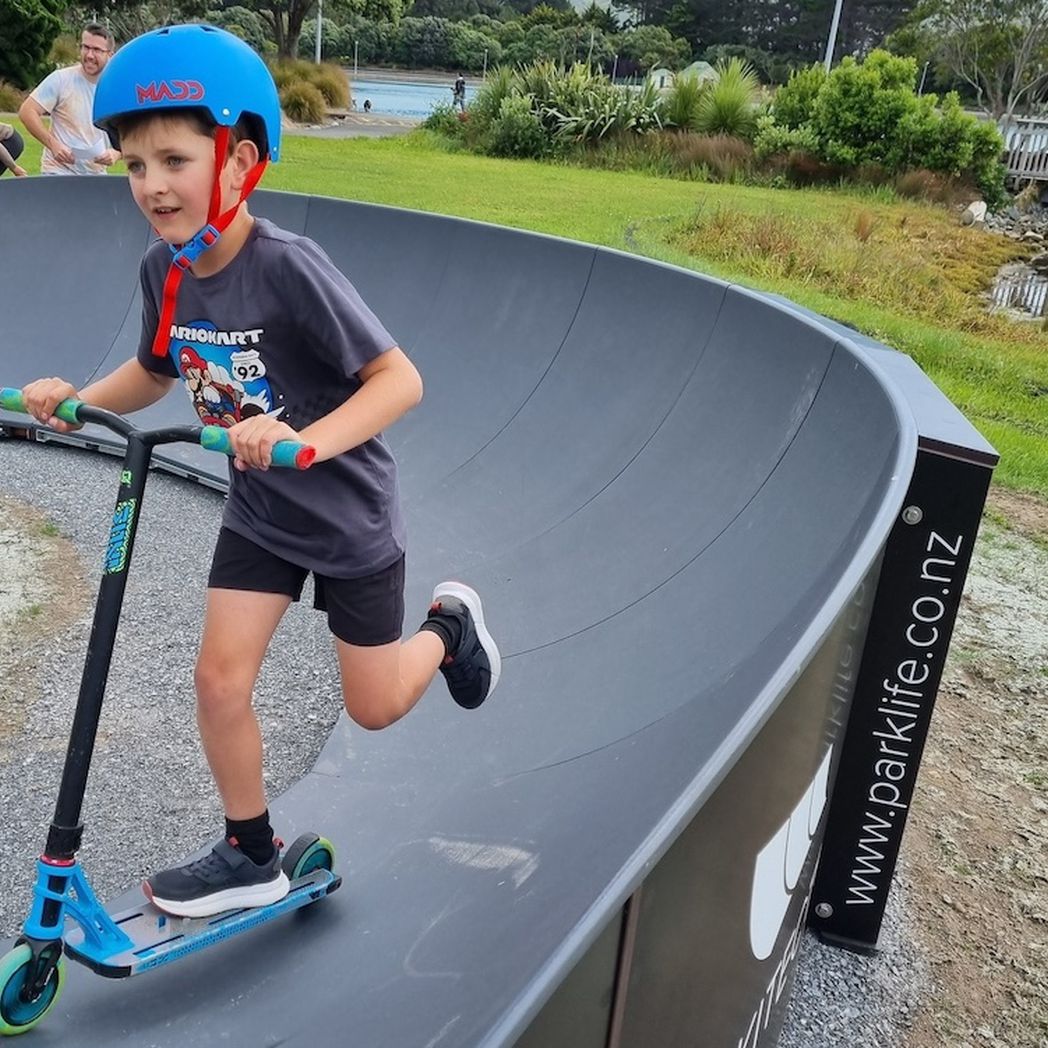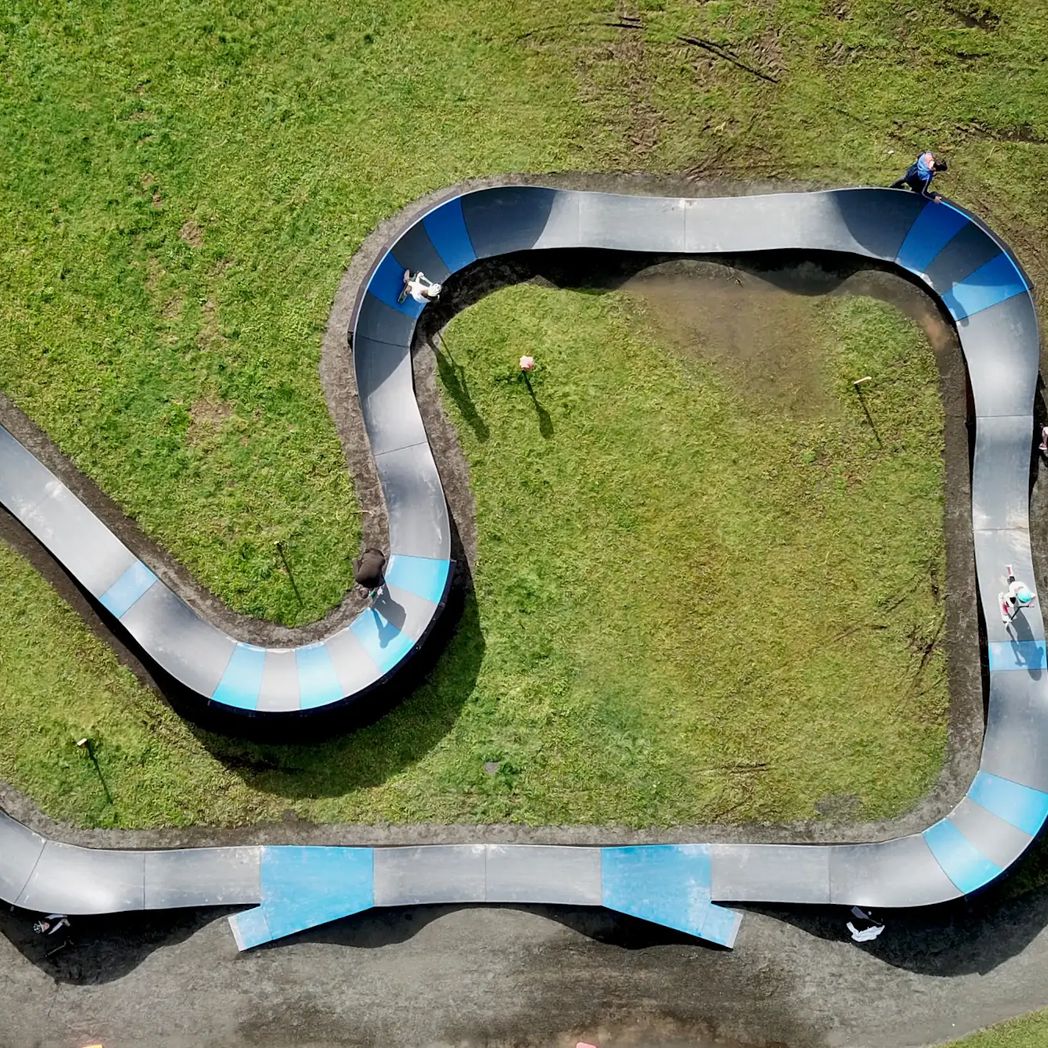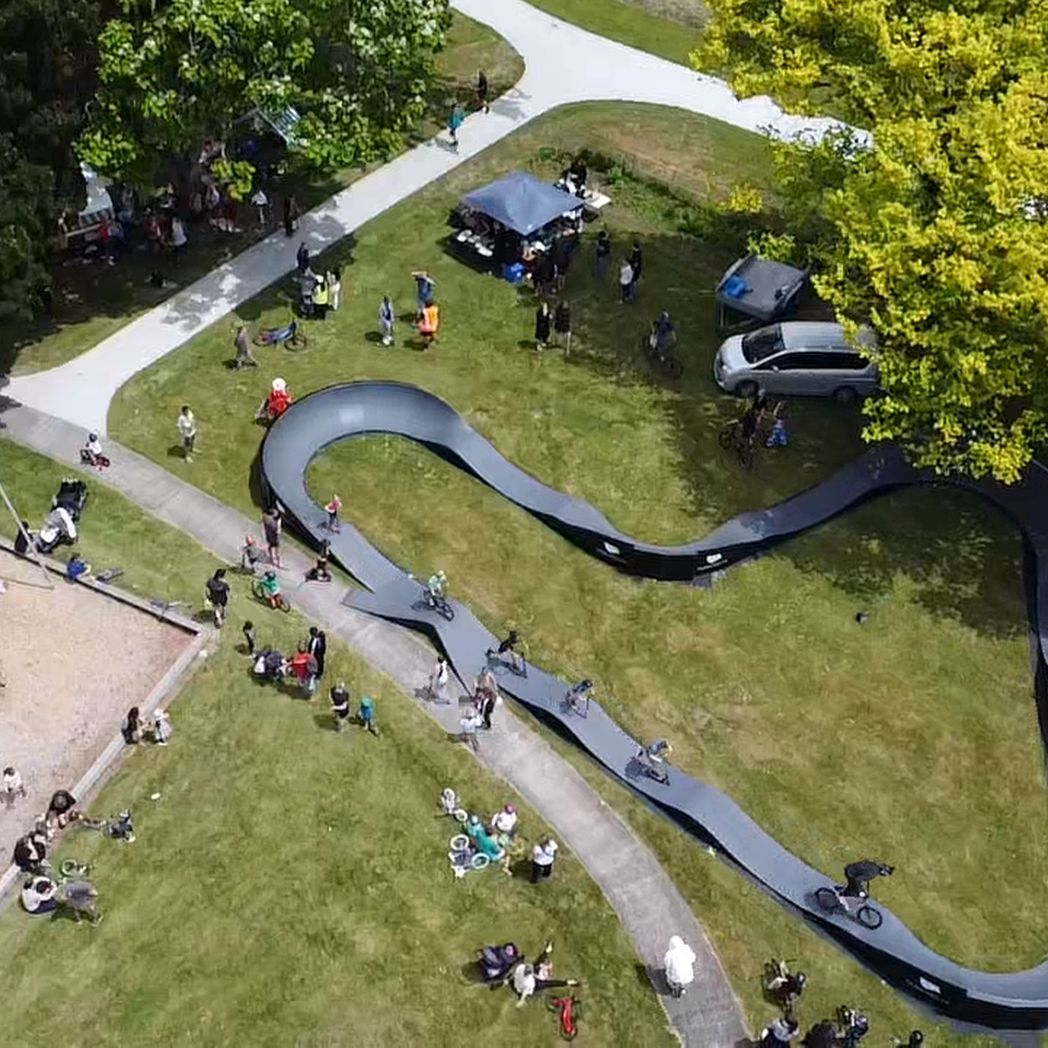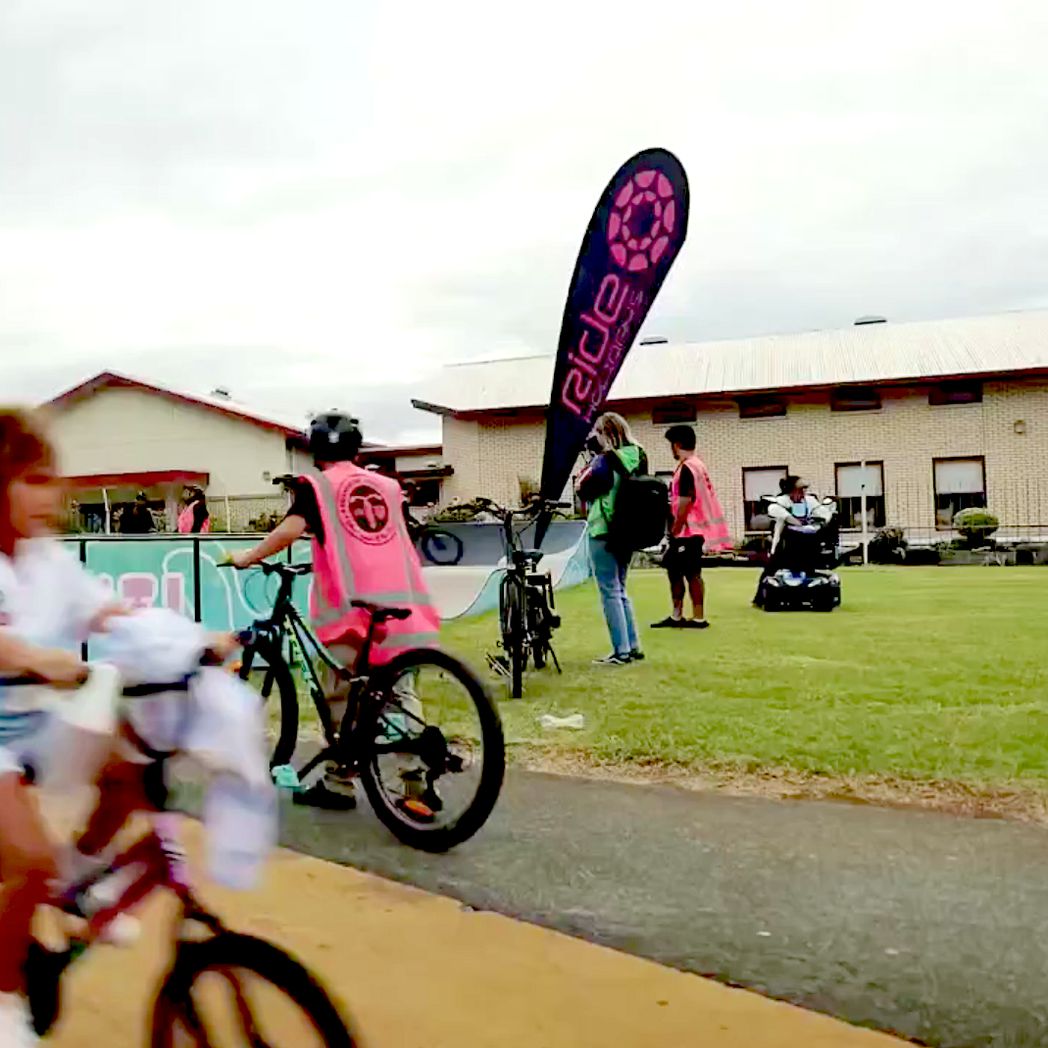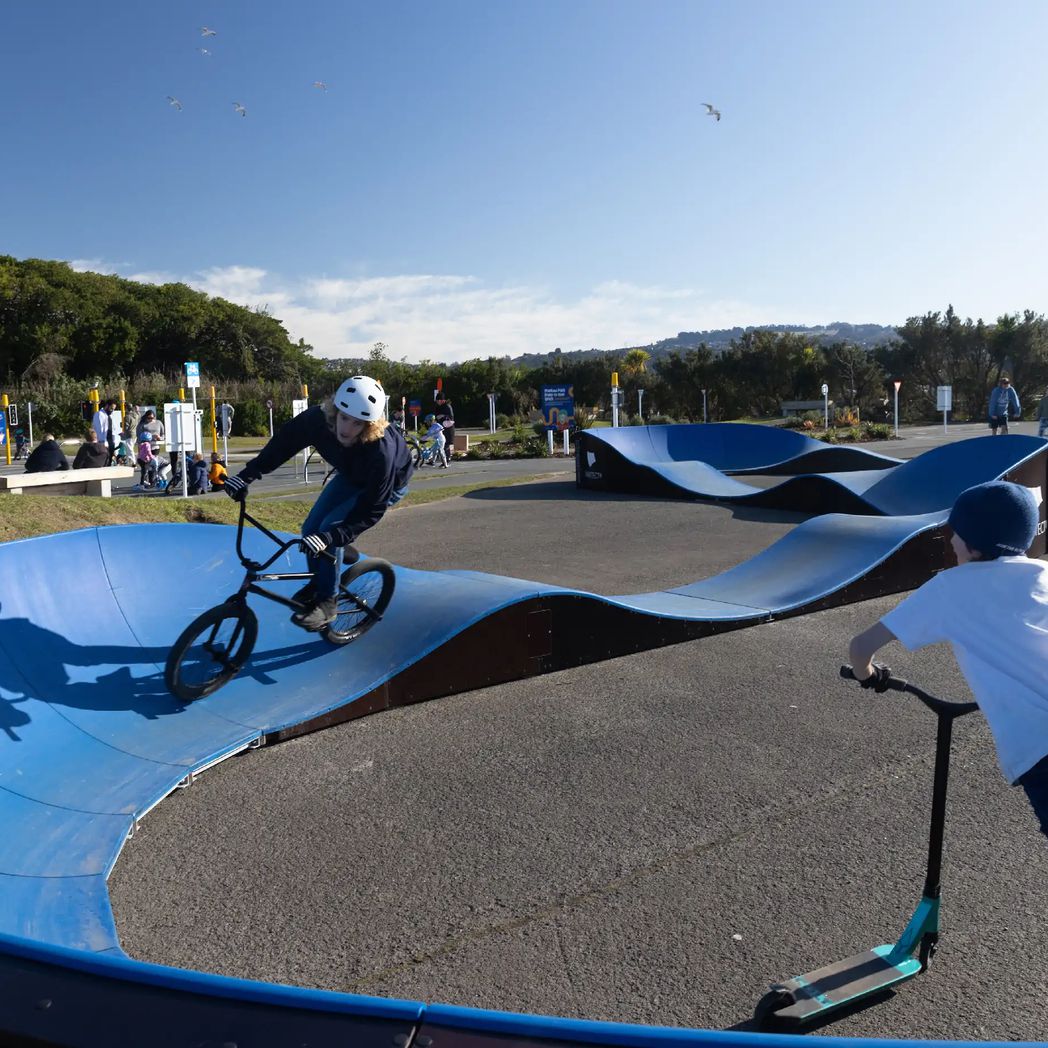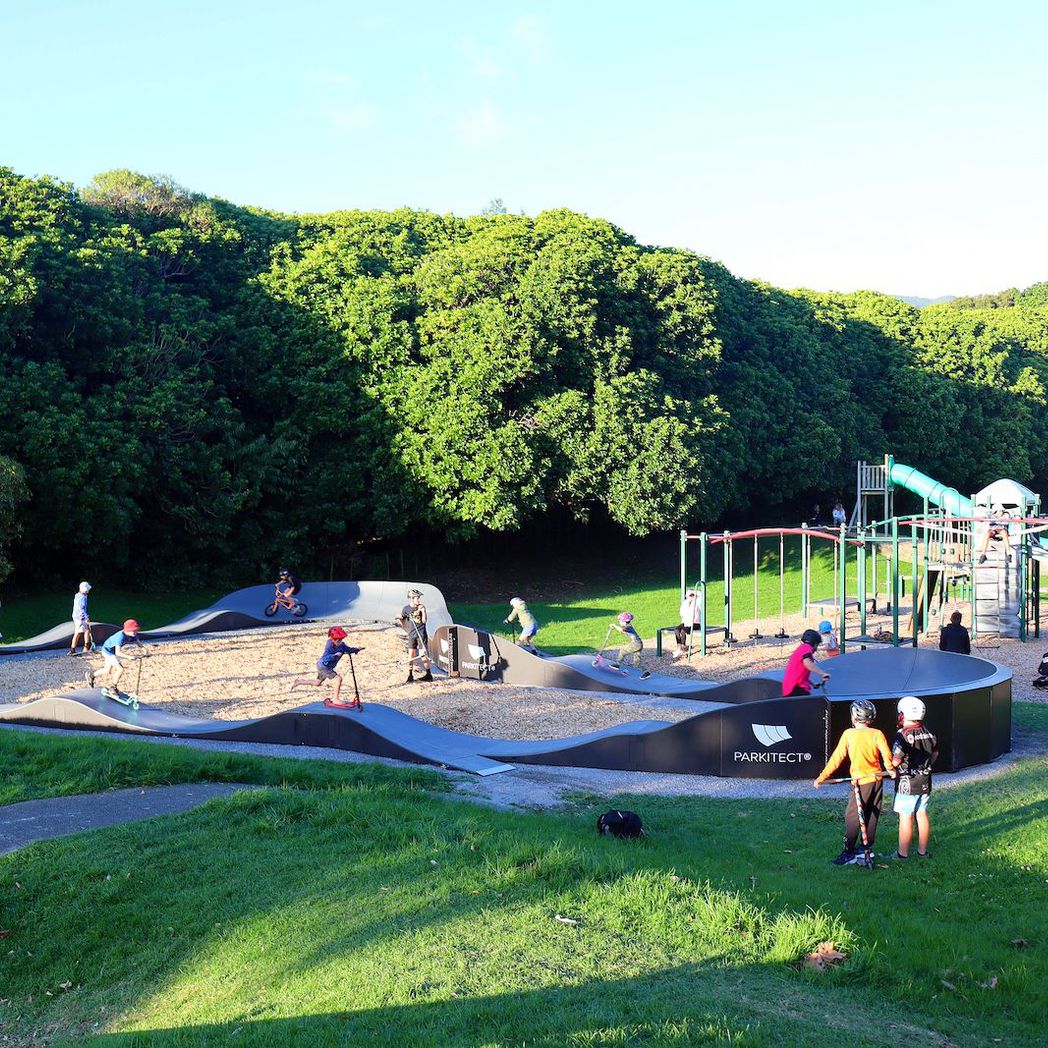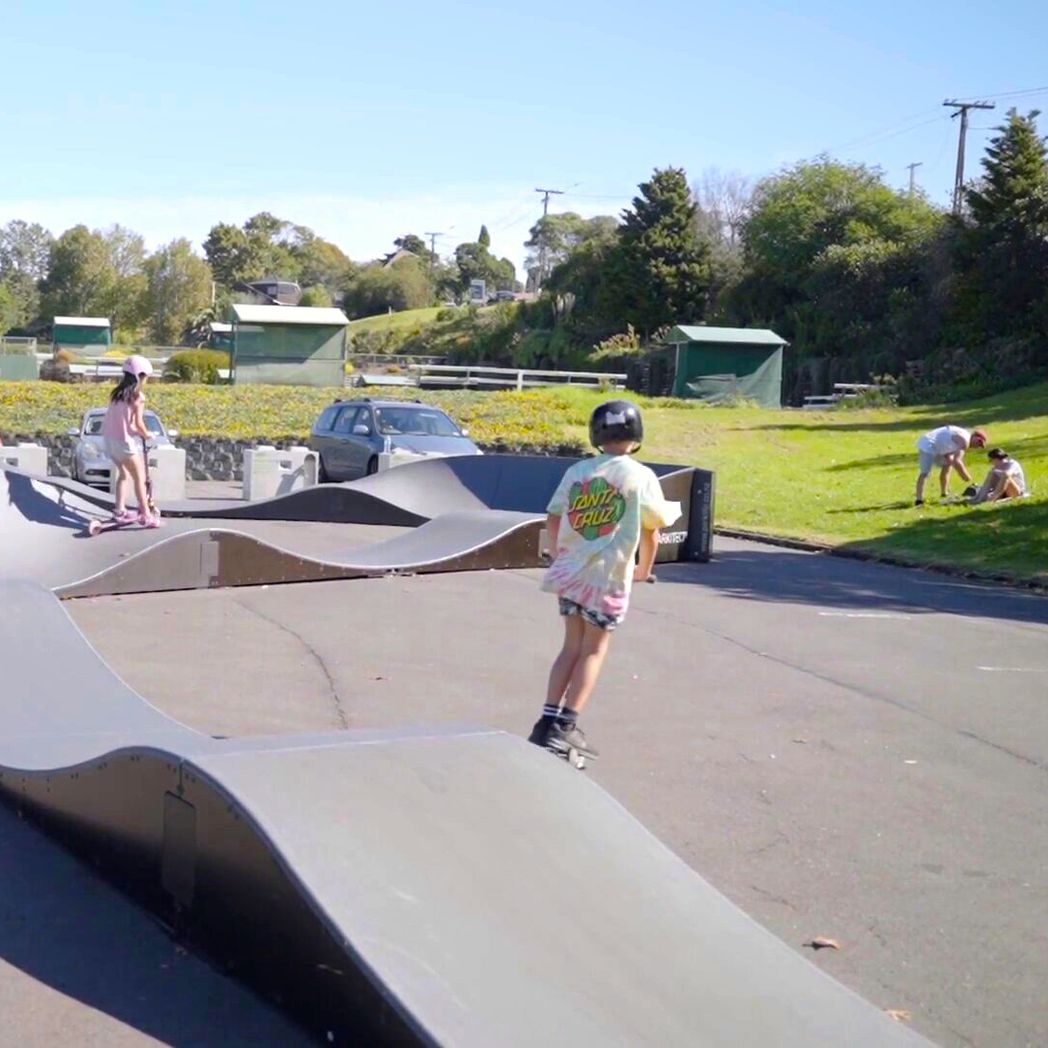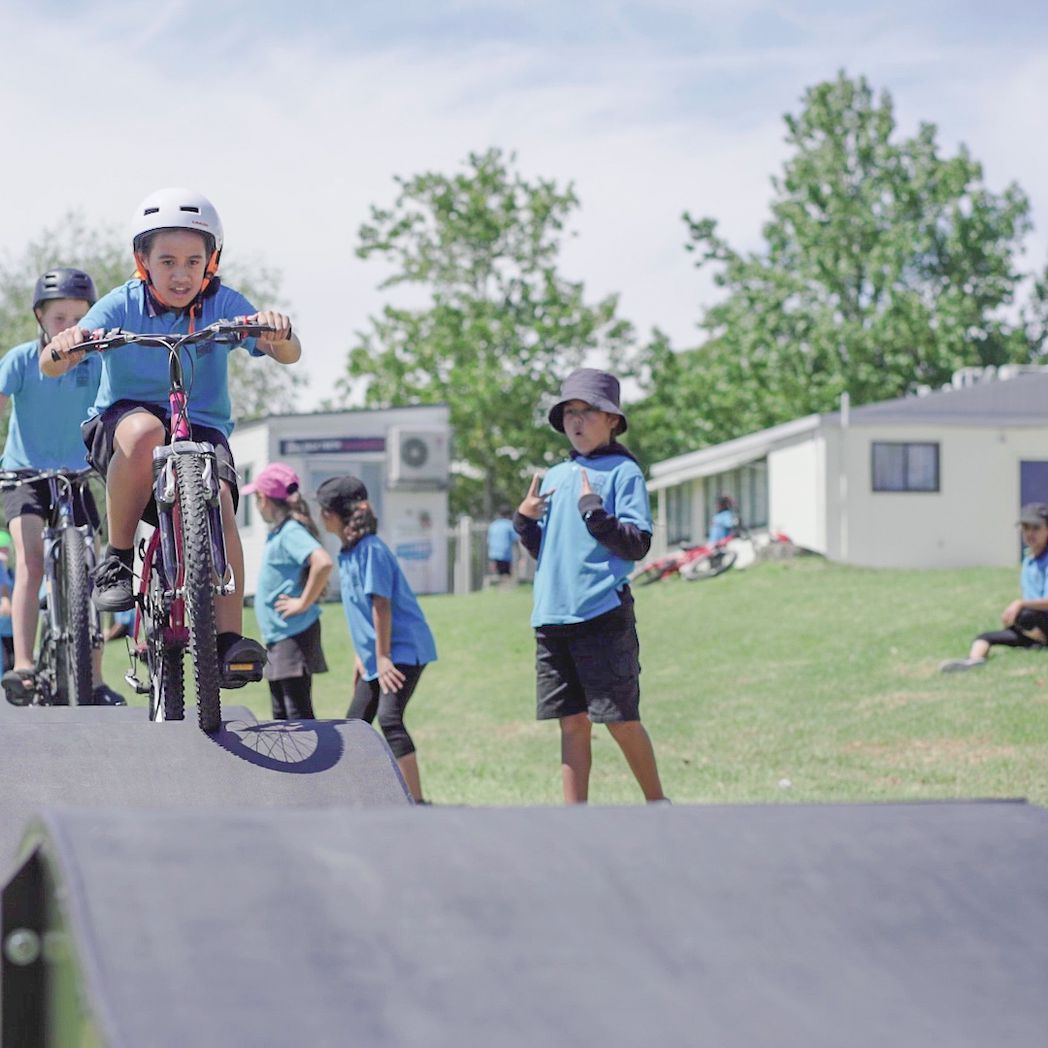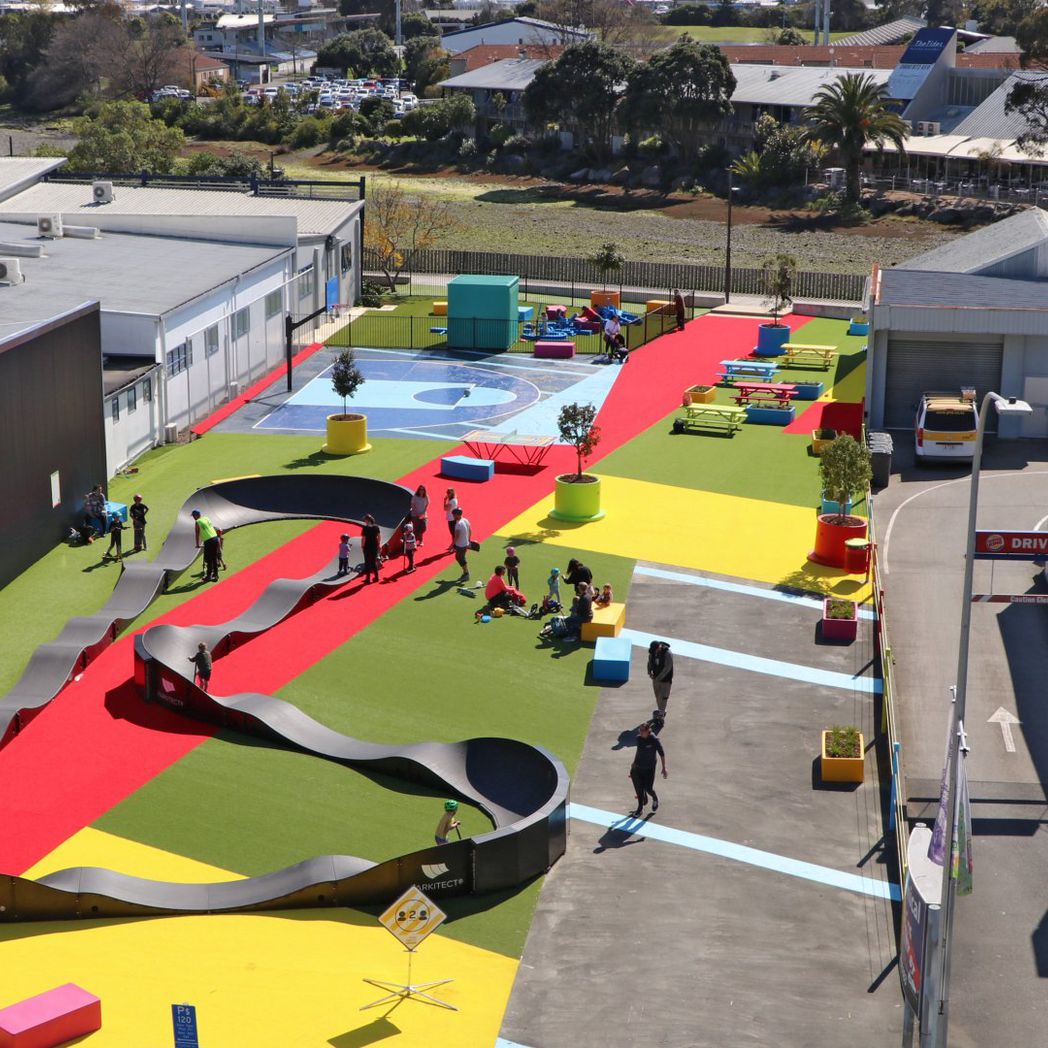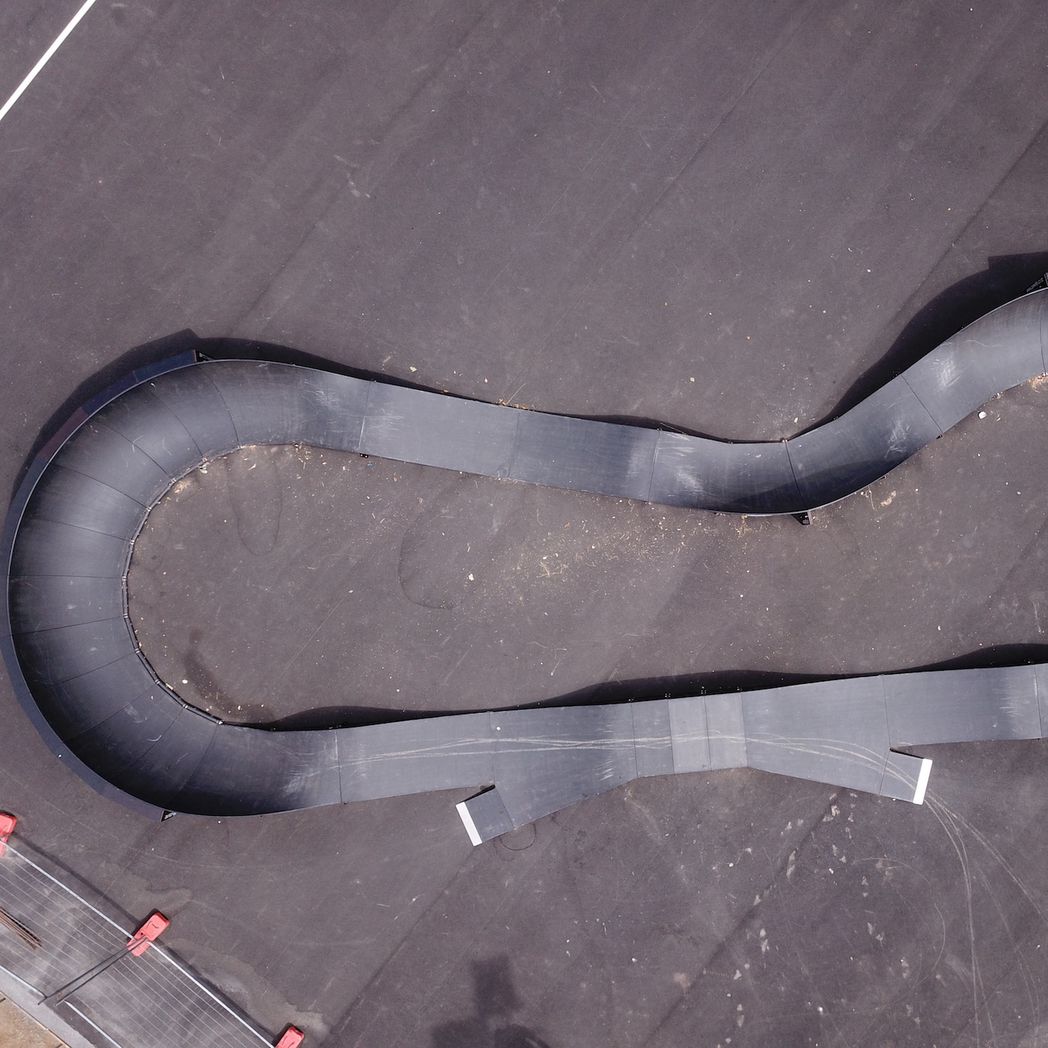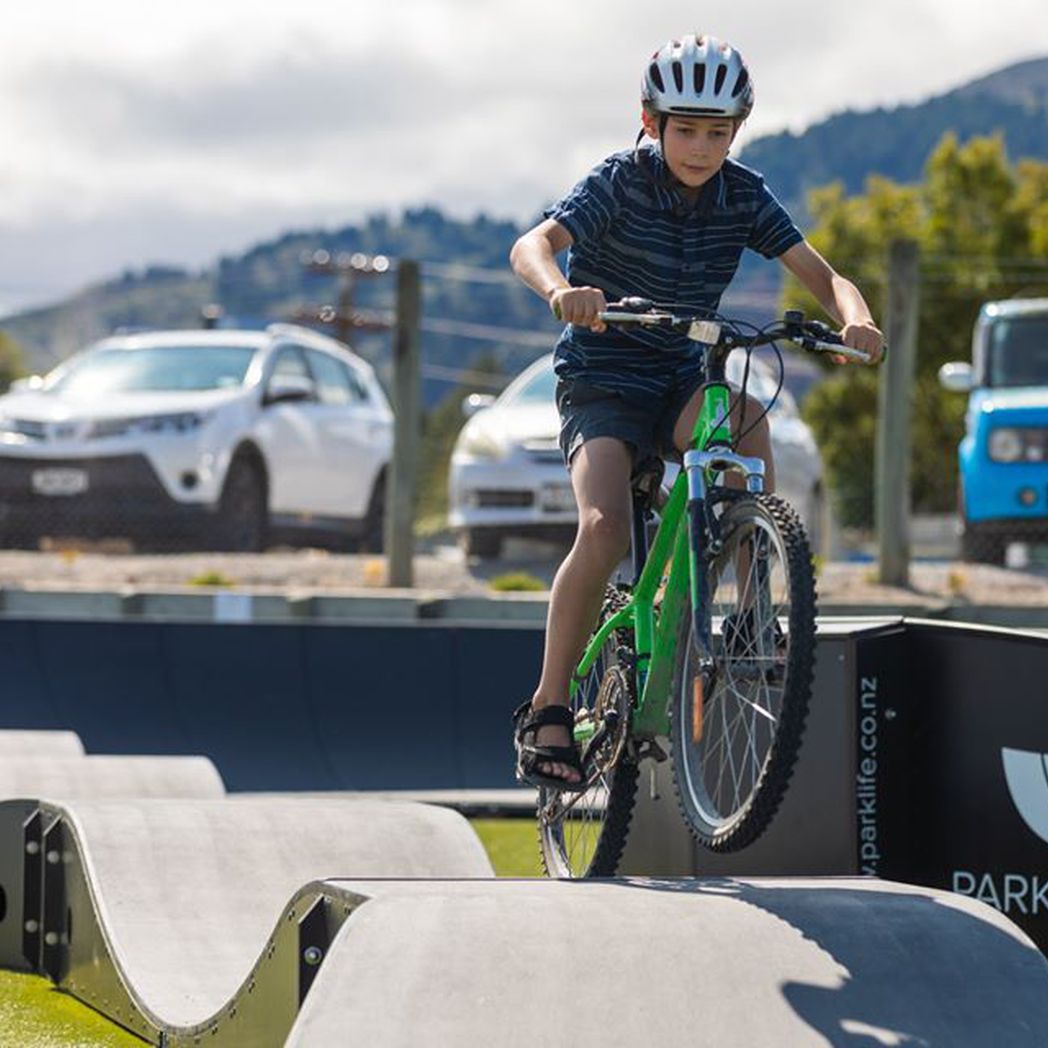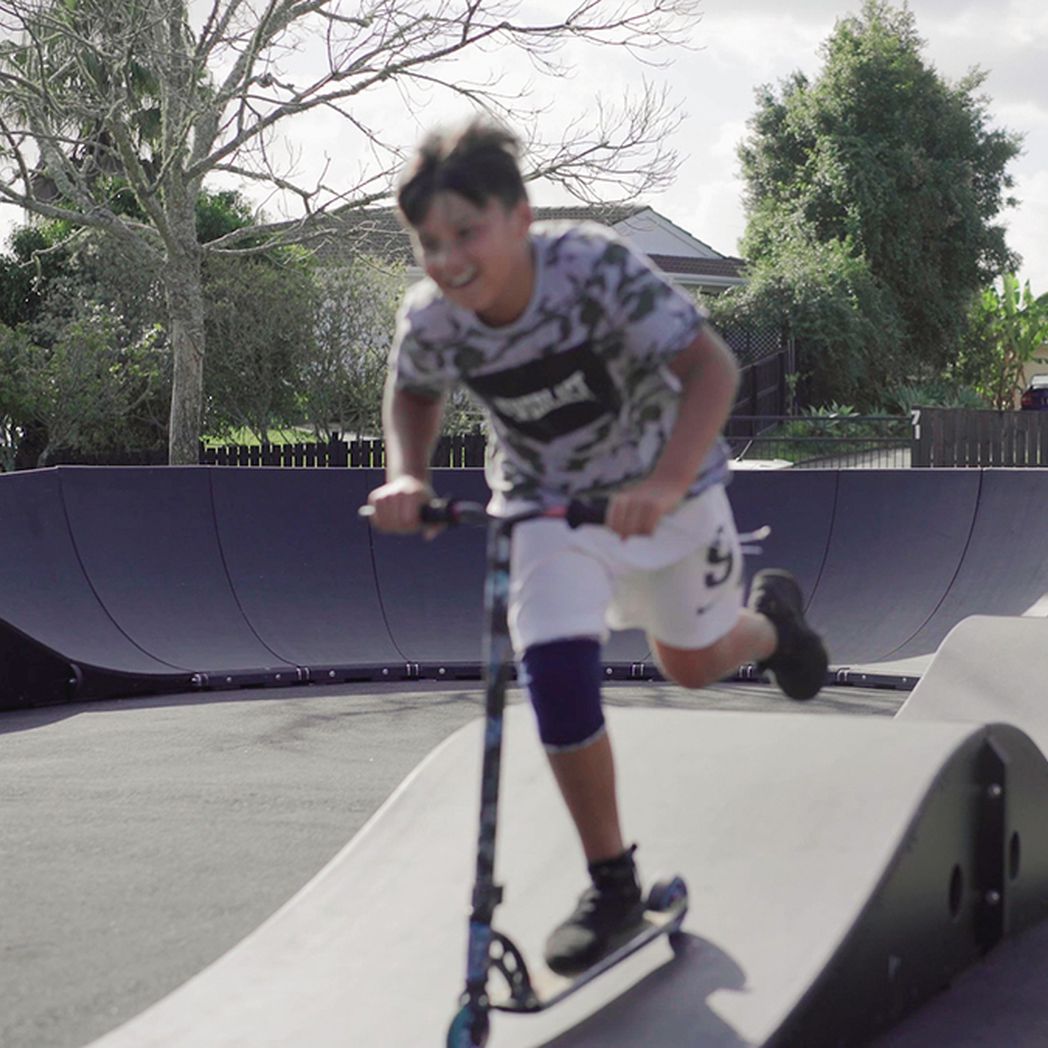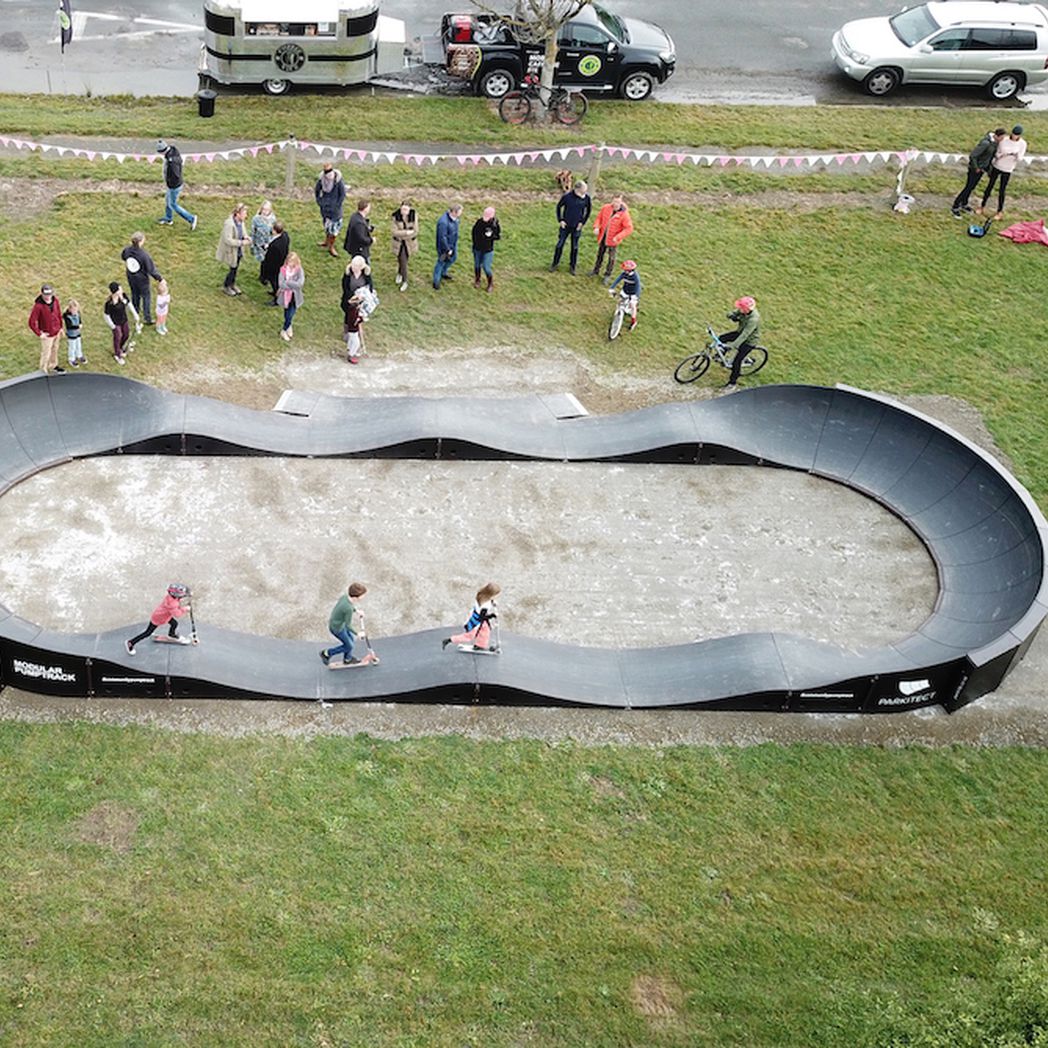Who is riding?
Scooters and bikes are the most popular wheeled activities for youth in New Zealand. Usage statistics from existing tracks show that scooters are the most popular (60%), followed by bikes (30%) and then skateboards (10%).
Growing participation
While males currently make up 81% of riders, female participation is growing.
How are tracks used?
On average, a track will see one-third of riders actively using it, one-third resting, and one-third watching.
Scooters are a popular commuting choice
Approximately half of all children in New Zealand commute to school on scooters.
The Problem: Not All Pump Tracks are Created Equal
Many pump tracks in New Zealand, especially older in-ground versions, often fail to deliver a smooth, safe, and fun experience for all users. Poor design and geometry can result in a ride that is choppy, awkward, and even unsafe.
See an independent review of an example of a track in NZ that is not well executed 2.0
The Solution: The Parkitect Difference
Parkitect's modular pump tracks take the guesswork out of building a great track. Our designs meet modern safety standards, ensuring a consistently fun and secure experience for everyone, regardless of their wheels.
Choosing a Parkitect track means you are investing in a genuine, high-quality, and safe riding experience for your community. It’s a choice that provides peace of mind while creating a robust recreational asset for your community.
See female rider on a skateboard and scooter on the Park Pump Track.
Watch an independent review of our Hybrid Pop-Up Pump Track by Levi Goodall, who rated it 4.25 out of 5.
